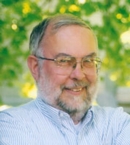What is TeX?
TeX (= tau epsilon chi, and pronounced similar to "blecch", not to the state known for `Tex-Mex' chili) is a computer language designed for use in typesetting; in particular, for typesetting math and other technical (from greek "techne" = art/craft, the stem of `technology') material.
...
It is a special-purpose programming language that is the centerpiece of a typesetting system that produces publication quality mathematics (and surrounding text), available to and usable by individuals."
Since its advent in 1978, TeX has been used in technical fields particularly in mathematics, statistics, astronomy, physics, and computer science. Nowadays it is also used in the fields of aeronautics, chemistry, biology, geophysics, electronics, humanities, psychology, law, theology, economics, phoenetics, and lingusitics. The TeX Catalogue Online gives some indication of its multi-lingual capabilities and wide range of applications.
For some personal views on "What is TeX" see Volume 2005, Number 3 of the The PracTeX Journal---an online journal for Practical TeX.
XeTeX (pronounced [zi:tex]) is an alternative TeX typesetting engine, which integrates the strengths of TeX as a typesetting system with the font and graphics support of Mac OS X, highly regarded in the world of design, publishing, and typography.
|
If you are already a user of TeX, join the TeX Users Group (TUG), and enjoy membership benefits while supporting future development.
Every member counts. Or, make a tax-deductible donation to help the TeX community continue to grow. The TeX typesetting system and the METAFONT alphabet design system were two of the first programs to be made available as public domain software in 1978 by
For the latest news on the practical use of TeX, read |




